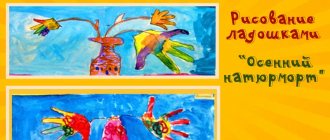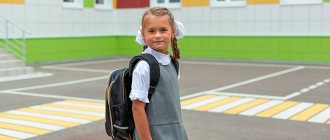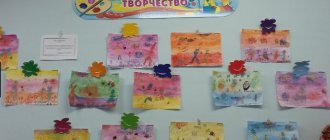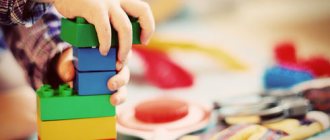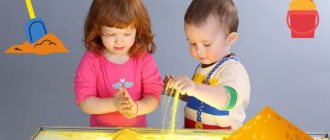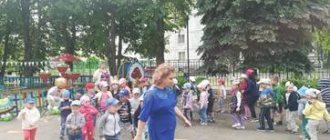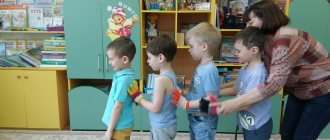Benefits of classes
Drawing in an unconventional palm technique will allow the child to develop the muscles of his hands, and parents will be able to establish psychological contact with the baby. Such activities not only entertain, but also bring benefits:
- develop motor skills;
- give new knowledge about the shapes of objects;
- teach color recognition;
- develop taste.
Regular finger painting classes allow you to strengthen your hand muscles and develop motor skills, and this has a beneficial effect on speech and abstract thinking. The child will be able to learn about new objects by depicting them, and will also become familiar with geometric shapes, different colors and shades. Such home lessons will help parents prepare their child for the first grade of school.
Small objects help develop coordination of movements. Children will be able to expand their horizons and gain new tactile and visual sensations. The child will receive many pleasant emotions from creative activities, he will develop a taste and a craving for beauty. Children express their experiences through colors. Each drawing reflects the joys and fears of a child. Parents should pay attention to what exactly he depicts.
You can start classes from 10-11 months, but the baby should draw only with the help of his parents. It is better to make the first lessons short - 5-10 minutes. Over time, they can be extended to 20-30 minutes.
You should not force your child to draw; it is better to observe his mood. Creativity requires a good mood and inspiration.
Advantages of the palm painting process
The baby's hand muscles develop during the process of drawing.
- The child begins to distinguish colors.
- The baby's creative abilities appear.
- Motor skills develop.
- The baby begins to distinguish different shapes.
- By learning something new, the baby prepares for school.
- Children's horizons are expanding.
Materials and tools
All materials can be found in any store that sells office supplies. Children do not need professional expensive paints. It is better to choose those with a safe composition, because the child can taste them.
Required tools and materials:
- paper;
- finger or any other paints;
- dry and wet wipes;
- cotton swabs and disks;
- old toothbrushes;
- oilcloth or mat for creativity.
You can choose any paper for drawing - A4 or A3 sheets, Whatman paper, coloring books, colored cardboard. You don’t have to buy expensive goods; just buy a standard album or sketchbook. But the paper in them should be thick so as not to get wet from water. Suitable paints include watercolor, gouache, and special materials for fingers. They can be purchased at any art stores. The colors should be bright; there are watercolors and gouache with glitter. Such materials will interest children. You can draw figures not only with your hands - the child can use cotton pads or sticks, toothbrushes.
It is advisable to seat the baby at a comfortable table, and lay a blanket or pillow on the chair to make him comfortable. It is better to cover the workplace with oilcloth or a special rug. In any case, the children will cover it with paints. It is also recommended to dress the child in old clothes that you don’t mind getting dirty. And to cleanse the skin you need to use dry or wet wipes.
Kids won't be able to draw serious pictures yet.
Their first attempts will resemble meaningless scribbles: dashes, sticks, crooked lines, blots. But the more often the child practices, the more interesting his images will become. With age, technique will improve, and the most talented children will begin to create real masterpieces.
Palm painting process
The child must be dressed in clothes that he does not mind getting dirty.
- You can also wear an oilcloth apron to protect children's clothes.
- It is better to use a large sheet for drawing. You can use a large piece of wallpaper or whatman paper. This is done so that the child can draw comfortably.
- If the child will draw on the floor, then it is better to lay oilcloth on the floor.
- First, paints diluted with water are poured into plastic plates. This is done to make it convenient for the baby to dip his hands.
- For drawing, it is better to take several primary colors at first.
- You can make handprints, draw lines, and so on on white paper.
It is necessary to prepare wet wipes and rags. This is done so that when
Precautionary measures
Small children get tired quickly; for the first time it is enough to practice for no more than 5 minutes . Further, the child’s attention will not concentrate on creativity. The first few lessons are an adaptation period. You should not set difficult-to-achieve goals while you need to conduct lessons in the form of a game. While drawing, children, with the help of their parents, will be able to study geometric shapes, names of colors, various animals and types of transport, even body parts.
It is important to properly prepare the workplace and monitor the baby. First you need to deal with the paints. If it is watercolor, then it is diluted with water to a paste-like state. Thick gouache should also be made more liquid. Finger paints are ready to use. You can add glitter to them to make drawing more interesting.
It is better to pour the material into a flat saucer or plate. It is difficult for kids to get paint out of a small jar with their fingers; it is much easier to scoop it out of a large bowl. It is recommended to place a bowl of warm, clean water nearby. The child will wash his hands in it in order to continue using a different color. You also need to place a towel nearby, which can be stained with paint.
It is not advisable to leave your baby alone during classes. A small child can be so inventive that he will paint more than just paper . The role of parents during creativity is to channel the children's energy. The mother or father must communicate with the baby, prompt or help him. But you need to be allowed to make mistakes. Let a child draw crookedly or ugly - this is how he still expresses his “I”.
If the baby is not yet a year old, then it is better to provide him with a floor instead of a table. It is advisable to remove the carpet from it and lay down oilcloth. It is also recommended to remove all items that a child could damage. Wardrobes and beds can also be covered with oilcloth, otherwise they may be painted. If parents are afraid that the baby will freeze, you can put a warm blanket under him.
Paint Recipes
The technology called “Finger Painting” involves the use of paints. But many parents worry that they may be dangerous for the child. After all, many kids taste them, and they contain many harmful chemicals.
Some mothers prepare their own paints. The ingredients are quite simple:
- 2 tbsp. flour;
- 1.5 tbsp. water;
- 7 tbsp. l. salt;
- 1.5 tbsp. l. vegetable oil;
- glycerol;
- food colorings.
First you need to mix the dry products - flour and salt. Add water to them and stir until thick sour cream forms. Then add vegetable oil. The ingredients can be mixed with a whisk, fork, mixer or blender. Glycerin is added as desired, it gives the paint shine.
The finished mass is poured into different jars; you can use empty containers from gouache or baby puree. Then you need to add dyes. They can be natural - juice of carrots, beets, celery, turmeric. You can also use food colorings that are added to baked goods.
At home, you can prepare three-dimensional paints for finger painting. You will need few ingredients:
- 1 tbsp. flour;
- 1 tbsp. salt;
- 2 tbsp. water.
The products must be thoroughly mixed and placed in different containers. Then dyes are added to them. For additional shine, glitter or glycerin is added to the mixture. Next, the jars are placed in the microwave for 1.5 minutes at 180 degrees. The result will be a voluminous material. While drawing, the paints will lie on the paper so that any image will acquire a 3D effect.
You can also use porridge for cooking:
- 0.5 tbsp. fine-grained cereals;
- water;
- dyes.
Semolina is suitable for creating paints; it is quite small. It is cooked according to the usual recipe; the consistency of the porridge should resemble sour cream. For greater viscosity, you can add PVA glue to the mixture. The mass is also laid out in small jars and mixed with dyes. This material will also allow you to create three-dimensional drawings. But after applying it to paper, you need to handle the painting more carefully - it must dry. You can fix the cereal with regular hairspray.
Lesson summary for junior group 2 “Drawing with your palm”
Draw with your palm
(2nd junior group drawing lesson)
Target:
development of artistic and creative abilities in children using an unconventional drawing technique -
“Palm drawing”
.
Tasks:
· Educational: introduce children to the “Palm Drawing”
.
· Developmental: develop perception, imagination and memory.
· Educational: cultivate a caring attitude towards materials, use them correctly: upon completion of work, put them back in their place.
Material:
· drawing aprons for each child, a fish, a duck, a fitness track, a basin of water
· sheet of paper in the shape of an aquarium, gouache, brush, napkins
Progress of the lesson:
Educator: Guys, today we will go to visit the fish. Do you know where the fish lives?
Children's answers.
Educator: That’s right, the fish lives in the water. And so that you don’t get your clothes wet, we’ll put on aprons and go on an exciting journey. (The teacher puts on aprons).
Educator: and now let’s go on a journey to the fish. Let's turn into fish and swim to them.
The teacher reads the verse and shows the movements, and the children repeat:
Fishes swim and dive in clean, warm water.
(We perform wave-like movements in the air and walk along the health path).
Either they will shrink, they will unclench, or they will bury themselves in the sand.
(Palms are closed and slightly rounded. We perform a “diving” movement with them)
Educator: Here we are. Look, guys, what do we have here? (there is a bowl of water in front of the children). That's right, water, and there's a fish in it. What is she doing? (floats)
Tell me, what kind of fish? What does she have? Children describe the appearance of the fish. The teacher asks questions.
Educator: That's right, the fish has a head, eyes on its head, they are large and round. There is also a tail and fins. When a fish swims, it moves its tail and fins. Guys, let's count? (counts). Tell me how many of you are there? (a lot of). How many fish are there in the water? (one).
Guys, let's help our fish find a lot of friends. We will draw fish on this piece of paper. I prepared different colors. Which? (children call), but forgot to bring brushes. But you and I can also draw with our palms. Remember how we did it.
The teacher clarifies the palm drawing technique.
Independent work of children with musical accompaniment. As the activity progresses, the teacher helps and reminds about the careful use of paints.
Educator: Look how many beautiful fish you have drawn. Let's get our hands in order (clean our hands of paint with napkins).
The teacher leans towards the water and listens.
Educator: Guys, the fish told me that she really liked the new friends you drew (praises each child) and says thank you. Let's say thank you and say goodbye to the fish.
Publication address:
Tips for parents
Parents should show the little ones exactly how to draw a picture with their fingers. The unusual technique of fine art should interest the child. Use your fingertip to scoop up some paint and make a dot or draw a line on the paper. The baby can repeat this. But you can draw not only with your fingers, but with your entire palm.
Older children enjoy using ready-made templates. You can find them on the Internet and print them or draw them yourself. These are images of fruits, vegetables, animals, transport. They are usually already painted, but have white areas. The child must paint them so that the colors match, or trace the outlines of the drawings .
There are popular pictures that kindergarten teachers use. The finger painting technique is also suitable for depicting natural phenomena. A child can draw the sun, rain, snowfall, and starry night with his hands.
The background is painted over with your fingers, evenly distributing the material over the paper. But you can use colored cardboard. Large images - sun rays, clouds, fish, flowers - are drawn with palms. And small details can be depicted with little fingers, cotton swabs and even toothpicks.
Finger painting will allow you to prepare greeting cards and themed posters for kindergarten. The child will be able to take part in decorating the house for any holiday. And parents will help kids master more complex painting techniques with each new lesson.
